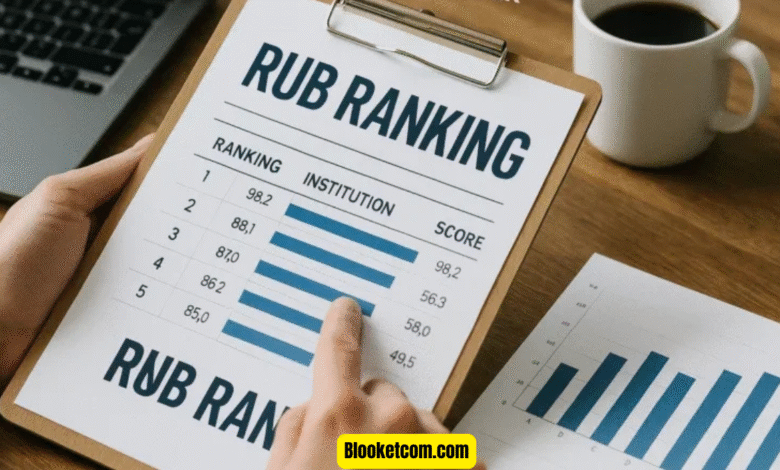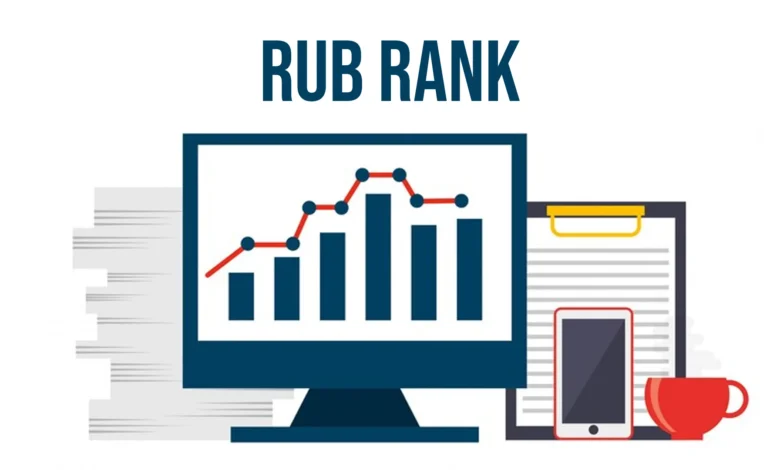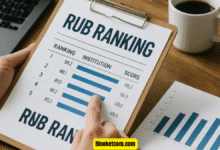Rub Ranking Explained: What It Is, Why It Matters, and How to Navigate It Like a Pro

Introduction: The Curious Case of Rub Ranking
If you’ve stumbled upon the term “rub ranking,” you’re probably wondering if it’s some niche metric or a hidden algorithm that determines your standing in an obscure leaderboard. The truth? It’s a bit of both, depending on the context in which it’s used. In various online and competitive environments—be it gaming, forums, trading platforms, or even fitness circles—the term “rub ranking” is beginning to pop up as a way to gauge influence, activity, and interaction.
Understanding rub ranking isn’t just about decoding jargon. It’s about unlocking a new level of awareness regarding how you’re perceived in digital or competitive ecosystems. It might sound lighthearted, but don’t underestimate its potential. This article breaks down everything you need to know about rub ranking—how it works, why it matters, and how to boost yours like a seasoned pro.
What Exactly Is Rub Ranking?
At its core, rub ranking is a form of metric—a score, a number, or a badge—that measures your activity, interaction, or impact within a specific system. It could be based on how many comments you’ve left on a forum, how often you’ve traded stocks in a simulation, or how active you are in a gamified fitness group.
Unlike traditional rankings that rely heavily on stats like wins, points, or revenue, rub ranking tends to blend quantitative metrics with qualitative influence. You might have fewer points but still maintain a high rub ranking if your contributions are valuable, consistent, or popular among peers. Think of it as the digital karma system’s cooler cousin.
What makes rub ranking especially interesting is its adaptability. Platforms can tweak the algorithm to include various input types—likes, shares, comments, trades, time spent active, etc. This makes it both powerful and slightly mysterious since the exact formula is often hidden.
Origins and Etymology of “Rub Ranking”

While the term “rub ranking” might sound like techie slang or an inside joke, its roots are surprisingly diverse. Some say it stems from early online trading platforms where users could “rub elbows” with successful traders, and their exposure or interaction would boost their visibility. Others argue it evolved in the context of online gaming communities, where interaction and presence could elevate one’s status even without top-tier performance.
Regardless of its exact origin, the name carries a sense of interpersonal value. It’s not just about numbers; it’s about your footprint in a digital community. The “rub” may metaphorically refer to friction or interaction—the more you rub against the system, the higher your rank. Sounds a bit cheeky? Maybe. But it works.
Etymologically, it’s a mash-up that’s easy to remember and kind of fun to say. And in the digital age, that counts for a lot. The sticky nature of the term has helped it become adopted in a variety of niche spaces online.
Where Rub Ranking Is Commonly Used
Rub ranking isn’t tied to a single platform or purpose. It’s versatile enough to show up in online forums, mobile apps, trading simulations, gaming environments, and even social fitness communities. Essentially, anywhere there’s user interaction, there’s a potential for rub ranking to emerge as a metric.
In stock trading simulations, rub ranking might measure not just profitability, but also frequency of trades, educational value of strategies shared, and peer upvotes. In fitness communities, it might rank you based on steps, challenges joined, and support given to others. On forums or social platforms, it could be a blend of posting frequency, comment depth, and community engagement.
This versatility means one person can have multiple rub rankings across different platforms, each tailored to the goals and culture of that space. It’s a way of measuring how plugged-in you are and how much you contribute—not just how good you are by conventional metrics.
The Psychology Behind Rub Ranking
Let’s talk psychology. Why do people care so much about rub ranking? One word: validation. Humans are social creatures, and we crave recognition. Rub rankings offer a tangible way to show you matter in a community. They tap into our desire for status and belonging.
But it goes deeper. Rub ranking also encourages consistent participation. Unlike systems that reward only the best performers, rub rankings often reward consistency, helpfulness, or engagement. This inclusivity creates a positive feedback loop: contribute more, rank higher, feel validated, contribute even more.
Moreover, rub rankings can gamify experiences that might otherwise feel mundane. Suddenly, commenting on a forum or uploading your workout becomes part of a strategy to climb the leaderboard. This boosts retention and fosters community growth, which is a win-win for platforms and users alike.
How Rub Ranking Is Calculated (Usually)
The exact formula behind rub ranking can vary wildly, and in many cases, it’s not publicly disclosed. However, some common elements tend to appear across systems:
- Activity Level: Posts made, comments written, sessions logged.
- Engagement Quality: Upvotes, likes, shares, or positive feedback from peers.
- Longevity: How long you’ve been active or consistent in your participation.
- Influence: The ripple effect of your contributions—e.g., how many people respond to your posts or mimic your strategies.
Some platforms use weighted algorithms, where certain actions are more valuable than others. For example, a thoughtful reply might be worth more than a quick emoji reaction. This adds depth to the ranking system and encourages meaningful engagement.
The mystery surrounding the algorithm adds an element of intrigue and keeps users guessing—which, strategically, can drive more interaction as people try to “figure it out.”
Why Rub Ranking Matters More Than You Think
On the surface, rub ranking might seem like a vanity metric. But in reality, it has far-reaching implications. For starters, it’s often tied to platform privileges. Higher-ranking users may get access to beta features, premium content, or even monetary rewards in the form of tokens or affiliate perks.
Rub ranking also acts as a proxy for trust and reliability. If someone has a high rub rank in a trading group, others are more likely to heed their advice. In social forums, high-ranking users often shape discussions and set community standards. Their contributions carry more weight, whether formally or informally.
Furthermore, for job-seekers, freelancers, or influencers, rub ranking can serve as a form of soft portfolio. Being top-ranked in a reputable platform can open doors, offering opportunities for collaboration, sponsorship, or career advancement.
How to Boost Your Rub Ranking Like a Pro
Boosting your rub ranking isn’t about spamming content or gaming the system. In fact, those tactics usually backfire. Instead, here are some tried-and-tested strategies to climb the ranks naturally and sustainably:
- Be Consistent: Show up regularly. Whether it’s daily, weekly, or even monthly, consistency builds credibility.
- Deliver Value: Share insights, solve problems, and contribute meaningfully. Quality trumps quantity every time.
- Engage With Others: Like, comment, and interact. The more you engage, the more visible you become.
- Stay Updated: Understand how the ranking works on your platform and adapt. Algorithms evolve.
- Avoid Burnout: Take breaks when needed. A fatigued contributor rarely ranks well over time.
Long-term success in rub ranking mirrors long-term success in real life: steady, thoughtful effort wins over quick bursts of activity.
The Dark Side of Rub Ranking
While rub ranking can be a great motivator, it’s not without pitfalls. One major issue is obsession. Some users become overly fixated on their rank, leading to anxiety, stress, and even burnout. When a system that’s supposed to be fun starts dictating your self-worth, it’s time to take a step back.
Then there’s gaming the system—users who find loopholes and exploit them to artificially inflate their rankings. This can erode trust within the community and devalue the metric itself. Good platforms update their algorithms regularly to curb such behavior, but it’s a never-ending game of cat and mouse.
Lastly, rub rankings can inadvertently exclude newcomers. When high ranks are dominated by early adopters or power users, new members might feel discouraged. This is why some platforms introduce rotating leaderboards or rank resets to keep things fresh and accessible.
Future of Rub Ranking
As more platforms embrace gamification and community-building, rub ranking is likely to become even more sophisticated. Expect to see integrations with AI to assess content quality, real-time analytics to track performance, and customizable dashboards to personalize your rub rank journey.
We might also see cross-platform rub ranking systems—like a universal score that tracks your influence across various apps and communities. Think of it like a credit score, but for social contribution and digital presence. Ambitious? Yes. Possible? Absolutely.
The future might also involve more transparency. As users demand clarity on how their rankings are calculated, platforms will have to strike a balance between algorithm secrecy and user understanding.
FAQs About Rub Ranking
1. Is rub ranking the same as a reputation score? Not exactly. While they’re related, rub ranking often includes additional factors like consistency, interaction depth, and influence ripple—making it a more comprehensive metric.
2. Can rub ranking be reset or lost? Yes, depending on the platform. Some systems reset periodically, while others lower your score if you become inactive or break community guidelines.
3. Do rub rankings affect real-world opportunities? Surprisingly, yes. High rankings in niche communities can lead to job offers, collaborations, and speaking gigs. It’s a subtle yet powerful form of online clout.
4. Is it worth trying to game the rub ranking system? Nope. Most platforms are savvy enough to detect manipulation. Plus, genuine engagement always trumps shortcuts in the long run.
5. How do I know what affects my rub ranking? Check the platform’s help center or community guidelines. If unclear, observe patterns and learn from top-ranking users. Many leave behind a trail of best practices.
If you’ve made it this far, you’re already ahead of the game. Rub ranking might sound like a quirky buzzword, but it reflects real dynamics in today’s online communities. Embrace it, understand it, and—if you’re up for the challenge—conquer it like a pro.



